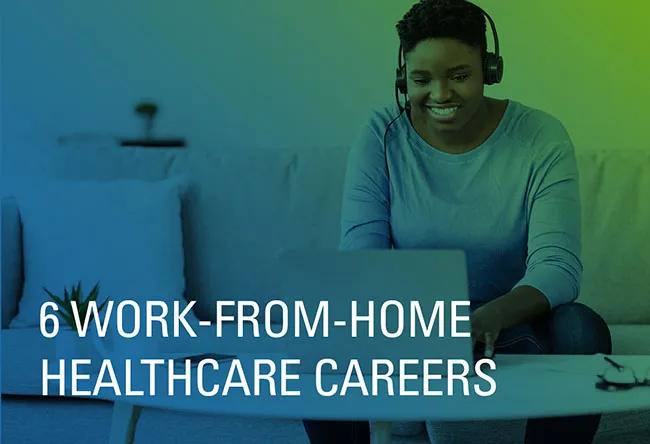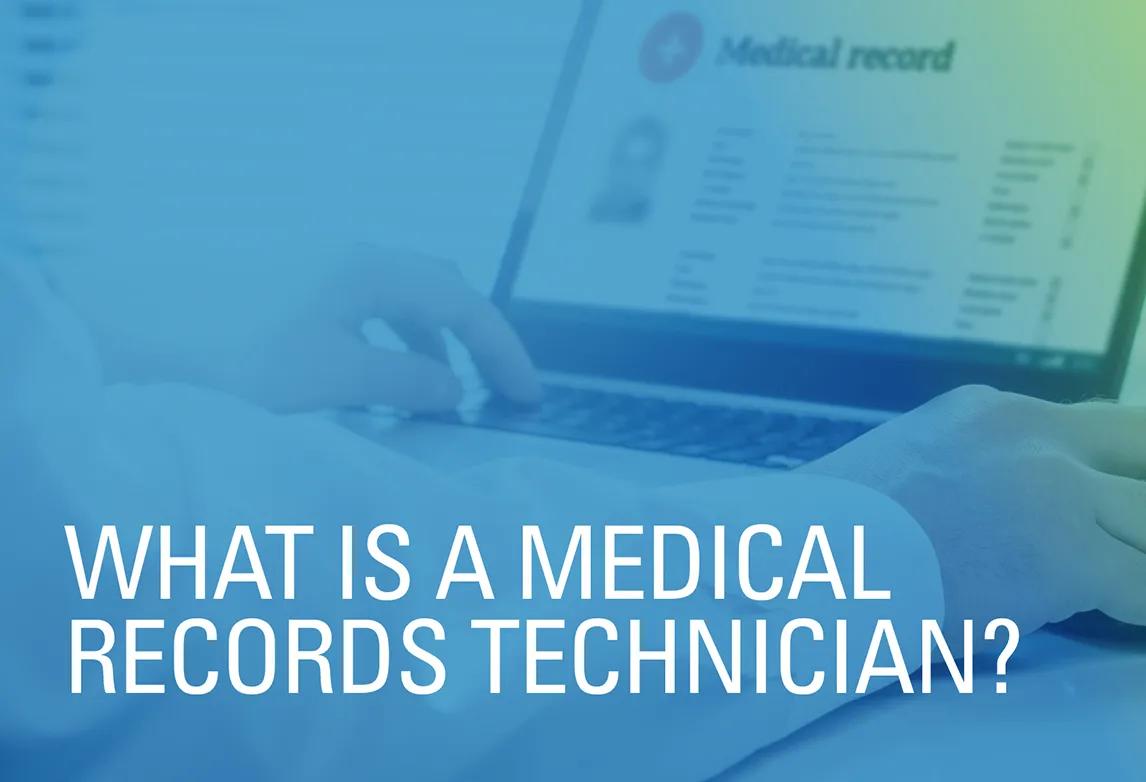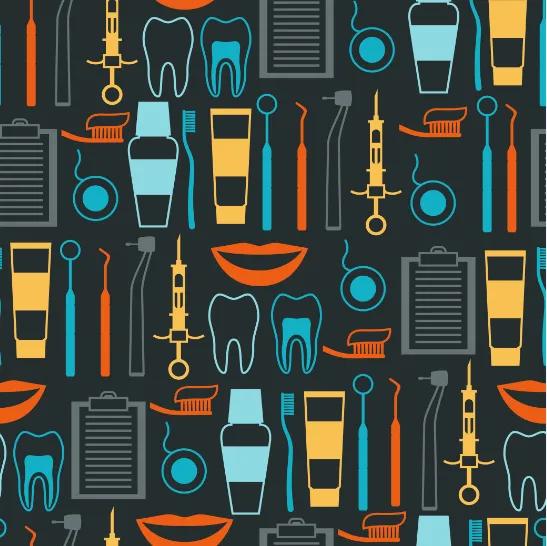6 Healthcare Careers with Flexible Work Options

A 2021 Gallup poll found that 25% of employees now work from home full-time and another 20% do remote work on a part-time basis.1 It also reports that nine in 10 remote workers want to continue to do their jobs from home permanently, at least on some level. If you want the same, some healthcare roles may provide the opportunity for remote work.
To be fair, when considering your remote work options, the healthcare industry might not have instantly come to mind. This is understandable since healthcare is often associated with patient care, which typically involves a face-to-face interaction (such as if you are a doctor or registered nurse).
But not all healthcare positions require that you report to a brick-and-mortar building, or even that you work directly with patients. This is good news if you’re interested in finding remote healthcare jobs.
Remote Jobs in the Healthcare Industry
The Bureau of Labor Statistics (BLS) projects that jobs in the healthcare industry will grow 16% from 2020 to 2030.2 This equates to roughly 2.6 million new positions in this field over the next decade or so. Which of these offer the potential for remote healthcare jobs? Here are six options to consider.
Medical Biller and/or Coder
Medical billing involves sending healthcare claims to insurance providers for reimbursement. Depending on the patient’s policy coverage limitations, deductibles, and co-insurance provisions, it might also involve sending a bill directly to the patient for his or her portion of the expense.
Medical coding consists of taking a patient’s diagnoses, testing procedures, and treatment plans and assigning them the appropriate code using standard coding systems. These codes are used for billing purposes to determine reimbursement rates. They’re also used to help track changes or highlight potential concerns in public health.3
Some healthcare organizations hire employees to provide only medical billing or medical coding services and others combine them into one position: medical biller and coder. Individuals in this type of dual role perform both functions, assigning the proper codes and then submitting the bills for reimbursement.
The BLS doesn’t have a defined category for medical billers and coders. Instead, these roles fall under the category of medical secretaries and administrative assistants. The median pay for individuals in these positions for May 2020 was $37,350 or $17.96 per hour.4 The bottom 10% of earners in this field have a median annual wage of $27,000 and the top 10% of earners had a median wage of $54,600 in May 2020.4
Since both medical billing and medical coding involve working on a computer, there’s a possibility they can be done remotely. If you’re interested in pursuing one of these roles or a combined medical billing and coding position, Ultimate Medical Academy (UMA) offers two career training options.
At UMA, you have access to both online Medical Billing and Coding diploma and associate degree programs. Each one provides the instruction needed to perform duties related to medical billing and medical coding. This includes learning about the standard procedural and diagnostic coding systems, increasing your understanding of medical terminology, and a review of the claim cycle and claims processing. At UMA, you can earn your diploma in 11 months or, if you would prefer an associate degree, it can be earned in 18 months.5
Health Information Technician (Health Information Management)
Health information technicians help healthcare agencies manage their patient’s private medical information. This often involves the use of an electronic health record (EHR) system, which is a digital medical record that houses a patient’s contact information, medical diagnoses, test results, treatment protocol, and more. Health information techs can be tasked with creating, updating, retrieving, or storing this type of data.
Because a patient’s health information is protected under the Health Insurance Portability and Accountability Act (HIPAA), another important function of the health information technician is to ensure that this data is protected and only accessible to those who have authorization to it.
Health information technician is also sometimes referred to as health information management. So, you may see remote health IT jobs under either title listing.
The BLS places these roles in the category of medical dosimetrists, medical records specialists, and health technologists and technicians. The median pay for health info techs was $44,090 in May 2020 or $21.20 per hour.6 The bottom 10% of earners – which would likely include those in entry-level health IT positions – earned a median annual wage of $28,800 in May of 2020 and the top 10% of earners hada median annual wage of $73,370.
Performing health information management job functions requires a certain level of knowledge in medical coding, healthcare reimbursement cycle and processes, information technology, statistics, and more. UMA offers training that provides instruction in all these areas. Our online Health Information Management associate degree program can be completed in 18 months5 and includes a 90-hour practicum, enabling you to apply your new skills on-site in a functioning workplace environment.
Medical Call Center Representative
If you’re interested in entry level remote healthcare jobs but still want some level of personal interaction, providing services as a medical call center representative can satisfy both desires. Individuals in these positions help healthcare organizations handle their incoming calls, which can include answering patients’ questions about an insurance claim, for instance, or working to resolve their complaints about an unsettled issue.
Some healthcare companies also ask medical customer service reps to initiate calls on the agency’s behalf. This could occur if the company is updating or changing its services, for instance. Or you could be tasked with calling patients to assess how satisfied they are with the level of service they have received.
The BLS indicates that customer service representatives had a median annual pay of $35,830 in May 2020 or $17.23 per hour.7 Additionally, those working for insurance carriers were among the highest-paid reps with a median wage of $18.77 in May 2020.8
Depending on the hours of operation, serving as a medical call center representative may mean working early in the morning, late at night, or on weekends and holidays. Since you will be on the phone, having a quiet background is beneficial, as is having a high-quality headset that enables you to easily hear the person on the other end of the line.
Many medical call center rep jobs only require a high school diploma, providing on-the-job training for new hires. Though, some employers might require a higher level of education, such as an associate or bachelor’s degree in business or communications.
Medical Transcriptionist
Transcriptionists provide a valuable service in a variety of settings, including many within the medical field. Healthcare professionals use medical transcriptionists to convert their audio recordings to written statements and reports. This can help keep patient files up to date while also enabling healthcare providers to supply other written documents that may be needed, such as patient referrals or discharge summaries.
Individuals providing medical transcription duties earned a median annual pay of $35,270 in May 2020 or $16.96 per hour.9 Because you’re converting audio files to text, some knowledge in the medical field is required (such as medical terminology). Therefore, it’s not uncommon for employers to require some type of postsecondary education, such as a diploma or degree.
If the employer doesn’t provide transcription devices or software needed to perform these duties, you may need to purchase this on your own. Word-processing software, programs that allow you to easily pause and play audio recordings, and other equipment may be needed to help you do this type of remote healthcare job. Other skills that can help you become a more successful medical transcriptionist include being a good listener, critical thinking, time management, and a good understanding of grammar and the English language.10
Begin Working Toward Your Remote Healthcare Career Today
If you have a passion for the healthcare industry but also want to work from home, these are a few options to consider. Some only require a high school diploma to get started while others might need a more advanced level of education in the healthcare field, whether through a certification program, diploma, or degree.
Ultimate Medical Academy (UMA) offers many healthcare programs and degree options, both online and at our Clearwater Campus. This enables you to choose the area that interests you most while providing the education and skills needed to serve in a specific healthcare role.
And if you know that you want to work in healthcare but are still unsure of what role might be for you, we can help with that as well. Contact us today and we can chat via phone or text. We’d be glad to answer any questions you may have about the programs we offer and how they can help you reach your healthcare career goals.
1 Gallup. Remote Work Persisting and Trending Permanent. https://news.gallup.com/poll/355907/remote-work-persisting-trending-permanent.aspx
2 Bureau of Labor Statistics. Occupational Outlook Handbook. Healthcare Occupations. https://www.bls.gov/ooh/healthcare/home.htm
3 Centers for Medicate & Medicaid Services. Code Sets Overview. https://www.cms.gov/Regulations-and-Guidance/Administrative-Simplification/Code-Sets
4 Bureau of Labor Statistics. Occupational Employment and Wage Statistics. Medical Secretaries and Administrative Assistants. https://www.bls.gov/oes/current/oes436013.htm
5 Completion times vary depending on individual student.
6 Bureau of Labor Statistics. Occupational Employment and Wage Statistics. Medical Dosimetrists, Medical Records Specialists, and Health Technologists and Technicians, All Other. https://www.bls.gov/oes/current/oes292098.htm
7 Bureau of Labor Statistics. Occupational Outlook Handbook. Customer Service Representatives. https://www.bls.gov/ooh/office-and-administrative-support/customer-service-representatives.htm#tab-1
8 Bureau of Labor Statistics. Occupational Outlook Handbook. Customer Service Representatives. https://www.bls.gov/ooh/office-and-administrative-support/customer-service-representatives.htm#tab-5
9 Bureau of Labor Statistics. Occupational Outlook Handbook. Medical Transcriptionists. https://www.bls.gov/ooh/healthcare/medical-transcriptionists.htm#tab-1
10 Bureau of Labor Statistics. Occupational Outlook Handbook. Medical Transcriptionists. https://www.bls.gov/ooh/healthcare/medical-transcriptionists.htm#tab-4
Request Information
Talk with us. Start your journey.
Complete this form and we'll call you to explore options at UMA and answer your questions. We'll also email you info on how to get started. We're with you at every step!
Request Information
Talk with us. Start your journey.
Complete this form and we'll call you to explore options at UMA and answer your questions. We'll also email you info on how to get started. We're with you at every step!
About the Author
 Adam Fenster
Adam FensterAdam Fenster is a senior copywriter at Ultimate Medical Academy, with journalism experience from his time as a reporter and editor for multiple online and print publications. Adam has been covering healthcare education since 2019, with an emphasis on topics such as wellness, healthcare employment, and job preparedness. He received his BA in journalism from the University of South Florida.
Related Content


